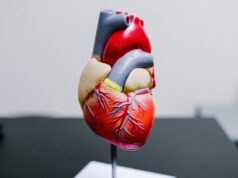
Presenters at the American Heart Association (AHA)’s annual Scientific Sessions (11-15 November 2017; Anaheim, USA) have identified the lack of awareness of automated external defibrillators (AEDs) in Latinos, as well as a general reluctance in bystanders to perform CPR on women. One presenter also highlighted the finding that hands-only CPR can be taught to children already in sixth grade, at the average age of twelve.
The AHA estimates that cardiac arrests occur more than 350,000 times per year in the US, with almost 90% mortality in patients who suffer cardiac arrest out of hospital. However, if performed in the first few minutes of cardiac arrest, CPR can double or triple chances of survival. Three presentations at the AHA’s Scientific Sessions 2017 discussed difficulties and opportunities for specific demographics in relation to out-of-hospital CPR.
Latino neighbourhoods at risk for lower use of AEDs
According to preliminary research funded by the AHA, Latinos are less likely to know what an AED is and who can use it, which could affect outcomes of sudden cardiac arrests in Latino neighbourhoods. Although lack of awareness and use of AEDs by bystanders is in general “strikingly low” according to researchers, the Latino respondents of this study were the lowest scoring group, with 26% not knowing what an AED is and only 19% being aware that anybody can use an AED, compared to respectively 5% and 27% of Caucasian respondents.
The findings were presented by Benjamin Abella, University of Pennsylvania, Philadelphia, USA.
Women less likely to receive CPR from bystander in public
Another preliminary research presentation showed that although there are no significant gender differences in CPR performed on cardiac events in the home, a higher percentage of men (45%) receive assistance from bystanders in public compared to 39% of women. The study found that men were 1.23 times more likely to receive bystander CPR in public settings, and they had 23% increased odds of survival compared to women.
“CPR involves pushing on the chest so that could make people less certain whether they can or should do CPR in public on women,” says Audrey Blewer, the study’s first author and assistant director for educational programs at the Centre for Resuscitation Science at the University of Pennsylvania in Philadelphia, USA.
Children able to perform CPR
Mimi Biswas, University of California Reverside School of Medicine and Riverside Community Hospital, Riverside, USA, presented the preliminary results of a study on the age of learning hands-only CPR. The research found that students as young as sixth-graders can learn and perform CPR effectively and should be targeted for training.
The study assessed the ability of 160 sixth-graders with an average age of twelve to perform hands-only CPR for adults, using music and a video game to help the students attain the correct compression rate. These tools were found to be effective in teaching children to attain goal compression rate, although most students across groups (with or without music and video game tools) remembered to call 911, performed CPR in the correct location and provided high-quality compressions.












